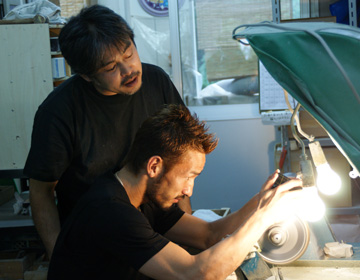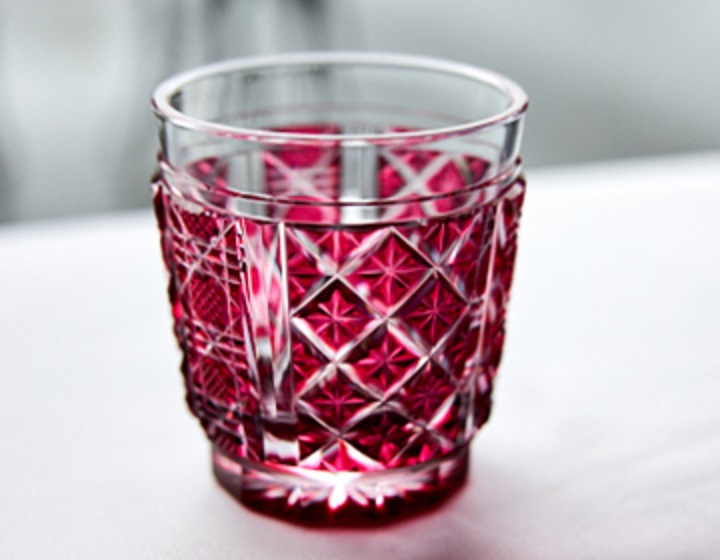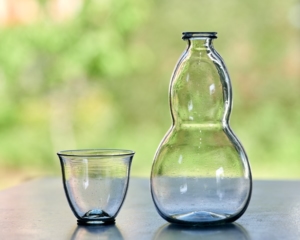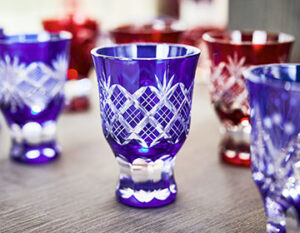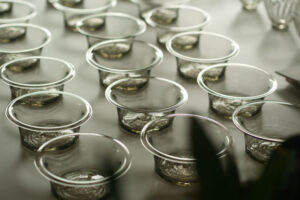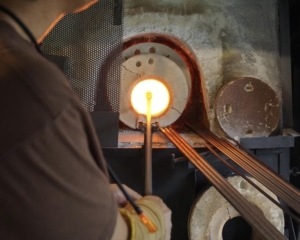Satsuma faceted glass, a specialty of Kagoshima
It is said that the Satsuma Domain made a great leap forward during the Meiji Restoration thanks largely to Shimazu Nariakira, the 11th lord of the Satsuma Domain. One of the specialties he left behind was Satsuma faceting, a glasswork as beautiful as jewelry. The production of Satsuma faceted glassware began at the behest of the feudal lord, who invited craftsmen with faceting skills that were spreading in Edo at the time, and began exporting the products overseas in order to boost the economic power of the feudal domain.
There are many cutting glasses in the world, including Baccarat. Satsuma faceted glass is as beautiful as Baccarat and many other cutting glasses in the world. It is characterized by the gradation and masculine strength depicted by layering colored glass on colorless glass and cutting it,” says glass artist Shoho.
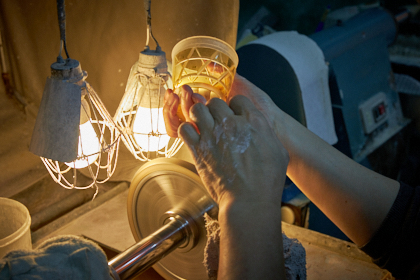
The differences between Edo faceted glass and Satsuma faceted glass
Edo faceted glass and Satsuma faceted glass are the two most famous faceted glass types, and each has its own distinctive appearance. Edo faceted glass is thin and the cut lines are thin and clear, while Satsuma faceted glass is thick glass with colored glass layered on transparent glass, and the colors are gradated by cutting through the layers of colored glass.
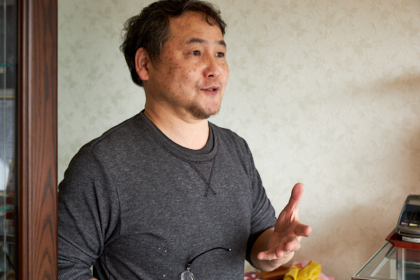
Facing Satsuma faceting as a glass artist
In fact, the technique of Satsuma faceting once ceased to exist around 1877 (Meiji 10), the year of the Civil War. The Satsuma faceting currently being made was restored in 1985 by a local company that is related to the Shimadzu family. In 1986, the very year the restoration project began, Mr. Shoho graduated from high school and joined Satsuma Glass Craft. It is said that it takes several years to be able to draw a single line,” said Shoho, who honed his skills in the difficult art of Satsuma faceting and eventually became an independent glass artist. I have been working with glass for 35 years now, and I still find it difficult every day,” he says. You have to draw not only straight lines but also uniform curves, and the depth of the lines must be even. It is important not only to improve the technique, but also to nurture the imagination that appeals to people as a work of art,” says Shoho.
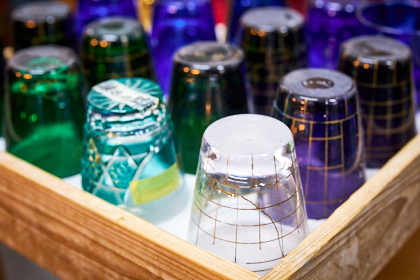
Traditional Skills Float into the Future
His works, which are based on old Satsuma faceted glass and create new works by utilizing the classics, are highly acclaimed overseas as well, and are sometimes used by Japanese consulates abroad as gifts for their dignitaries. Each piece has its own theme, and he draws motifs inspired by traditional patterns such as cherry blossoms and chrysanthemums, ladybugs, manga works, and many other things. The polishing process can be as small as 1 mm or less depending on the motif to be engraved, and he uses more than 100 different polishing tools depending on the pattern. From diamond kneaded tools to cloth tools for final polishing, the tools themselves are also made and adjusted by Mr. Shobo. When shown the finished work, the high transparency and gradation of colors are very beautiful, and the patterns on the pieces give a sense of nostalgia and modernity. The works fantastically depict the rich climate of Kagoshima, creating a new culture while inheriting tradition.
